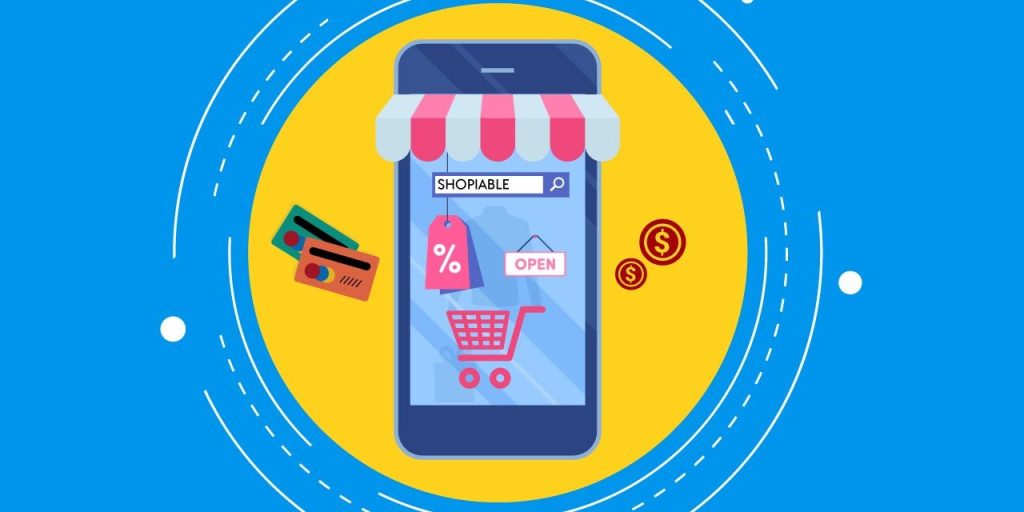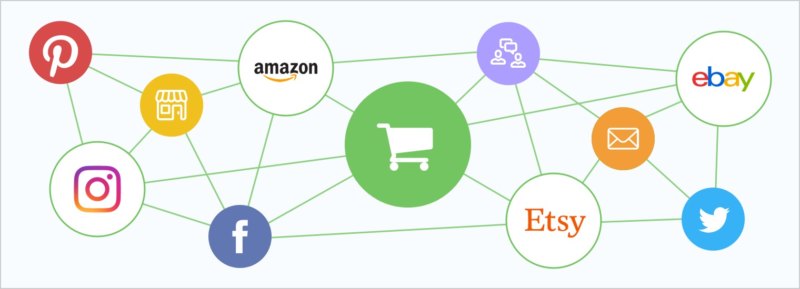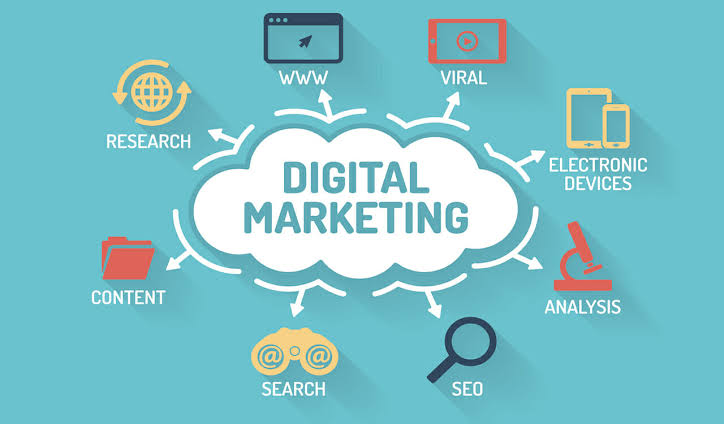You’ve heard the tales of entrepreneurs striking gold by setting up digital storefronts. You’ve read the statistics: global e-commerce sales are expected to hit $6 trillion by 2024. So now, you’re itching to ditch the 9-to-5 grind and dive into the tantalizing world of e-commerce. But before you leap, you need a roadmap. That’s where this comprehensive guide comes in, from decoding the basic terminologies to turning pixels into profits. Strap in; it’s going to be an enlightening journey.
Setting Up the Stage: Understanding E-commerce Fundamentals
The first thing you need to understand about how to sell online is the basics of e-commerce. This umbrella term describes the process of buying and selling goods or services over the Internet. Understanding this concept isn’t just about knowing what an online shopping cart is; it’s about grasping the entire back-end process that makes an e-commerce operation successful. This includes aspects like customer data analytics, supply chain management, and online payment systems.
When you’re looking into how to sell online, your first inclination might be to jump straight into choosing a platform or designing a website. However, this would be putting the cart before the horse. E-commerce is an ecosystem. In order to thrive, you need to understand how each part interacts with the others. This includes understanding customer psychology, marketing strategies, and even the laws that protect both buyers and sellers.
The scope of e-commerce is far more than a mere transaction between buyer and seller. It involves an entire chain of activities, from sourcing the product to post-sales support. Once you grasp this, the vastness of the e-commerce world truly opens up to you. We’re not just talking about traditional goods like clothes or gadgets. Services, digital products, and even experiences can be sold online. Imagine offering a virtual travel tour, a cooking masterclass, or even a musical concert to people from different corners of the globe!
E-commerce can also be categorized into different models depending on the transaction type. These include B2B (business-to-business), B2C (business-to-consumer), and C2C (consumer-to-consumer) among others. Knowing where your business fits in this puzzle will help you navigate through strategies and technologies more effectively.
Lastly, one of the significant advantages of selling products online is the data-driven decision-making process. Sales, customer feedback, and even window shopping can provide valuable insights into improving your online store. Unlike traditional retail, the world of e-commerce offers a robust set of tools to gauge customer behavior and market trends. Make sure to take full advantage of this!
Identifying Your Product
The core of how to sell products online revolves around what you’re selling. This might seem obvious, but it’s a little more nuanced than that. Whether you’re dealing with physical goods, digital downloads, or services, the product must solve a problem or fulfill a need. The importance of market research here cannot be overstated.
It’s not enough to say, “I want to sell homemade candles.” You need to find out who your competitors are, how saturated the market is, and what unique value you can bring. Market research tools can help you dig deep into your industry, providing insights that can steer your business in the right direction.
Let’s dive into selling products online from home, which has gained significant traction due to recent global events. This mode of operation offers various advantages, from low overhead costs to the comfort of managing business operations from your living room. However, there are also challenges, such as limited space for inventory and potential distractions.
One crucial aspect to consider when choosing a product is scalability. Your initial product range might be modest, but you should have a long-term vision. Can your product line expand? Can you offer variations, accessories, or even entirely new products that complement your initial offering? A good example is how phone case sellers gradually include screen protectors, charging cables, and wireless chargers in their product line.
Another often-overlooked facet is the legality of selling your chosen product. Regulations can vary by country or even by state. Ensure you are well-acquainted with any necessary permits, copyrights, or regulations associated with your product. For instance, food items may require special certifications, while electronic gadgets might need to pass safety standards.

Sourcing and Inventory Management
A dilemma many budding e-commerce entrepreneurs face is where to buy products to sell online. Sourcing products can take many forms, from dropshipping and print-on-demand to bulk purchasing from a manufacturer. Each comes with its own set of advantages and challenges. Dropshipping, for instance, allows you to start with virtually zero investment in inventory, but often comes with lower profit margins.
On the flip side, purchasing products in bulk may yield higher profit margins, but demands significant upfront investment. Inventory management also becomes critical here. Having too much stock can lead to waste and additional costs, while too little can result in missed sales opportunities. Thus, a well-balanced inventory, often aided by Just-In-Time (JIT) methodology, can prove to be a golden middle path.
When sourcing products, it’s also essential to consider the quality and reliability of your suppliers. A single batch of defective products can severely tarnish your brand image. Always sample products and conduct quality checks before finalizing a supplier. If you’re considering global sourcing, be prepared to navigate additional layers of complexity like customs, international shipping, and language barriers.
Just as you can source globally, you can also sell globally. However, international sales bring their own set of challenges such as currency conversion, international shipping, and taxes. But don’t let this deter you; these hurdles are often outweighed by the ability to reach a larger audience.
Finally, technology can be a game-changer in managing your inventory efficiently. Software solutions can automate much of the laborious tasks associated with inventory management, such as tracking products across multiple platforms and generating real-time reports. Integrating such tools into your e-commerce setup can free you up to focus on other vital areas of your business.
Selecting the Right Platform
When figuring out how to start selling online, one of the most significant decisions you’ll make is choosing the right platform. There are various options, from self-hosted solutions like WooCommerce and Magento to hosted ones like Shopify and BigCommerce. Each has its merits and drawbacks, and the best choice often depends on your specific needs.
Hosted platforms offer the benefit of simplicity. They manage the server, security, and updates, allowing you to focus on your business. However, they often come at a cost, both monetary and in terms of limitations. Customization options might be restricted, and you’ll be tied to a monthly or annual fee.
Self-hosted platforms offer greater control and flexibility, but require you to manage the technical aspects. This might seem daunting, but don’t let it scare you. With a plethora of online tutorials and a vibrant community of developers, getting up to speed is more accessible than ever. However, bear in mind that your time is a resource. If you’re spending too much time tweaking server settings or worrying about security patches, it might be worth reconsidering your platform choice.
One thing often overlooked is the mobile experience. With more and more people shopping from mobile devices, it’s essential that your online store is mobile-friendly. Platforms that offer responsive designs or dedicated mobile apps have a significant edge in capturing this segment of the market.
Payment gateways are another consideration. You want to provide your customers with a variety of payment options. Some platforms have built-in payment gateways, while others require you to integrate third-party services. Make sure your chosen platform supports multiple payment methods like credit/debit cards, e-wallets, and bank transfers to cater to a broad audience.

Website Design and User Experience
The design of your website can be the defining factor in whether a visitor converts into a customer. This goes beyond visual aesthetics. Good design enhances usability, guiding the user effortlessly from the landing page to the checkout.
One crucial element is navigation. A complex or confusing menu can frustrate users and lead to abandoned carts. On the other hand, a clean, intuitive interface can significantly enhance the user’s shopping experience, encouraging them to spend more time (and money) on your website.
Content is king, even in e-commerce. High-quality, relevant content can not only attract more visitors, but also keep them engaged. This could range from product descriptions and reviews to blog posts and how-to guides related to your product range. Engaging content can be your secret weapon in building a loyal customer base.
A/B testing can be incredibly valuable in optimizing your website design. By running parallel versions of a page, you can compare their performance to see which elements resonate more with your audience. This could involve tweaking layouts, colors, or call-to-action buttons. Never underestimate the power of incremental changes; they can accumulate to produce substantial benefits.
Your website is your online storefront; hence it must instill a sense of trust. Displaying trust badges, secure payment gateways, and transparent business practices can go a long way in building credibility. Customer reviews and testimonials can also serve as social proof, further boosting your store’s reliability.
Payment and Checkout Process
The checkout process is where the rubber meets the road in how to sell on the internet. It’s where all your efforts in setting up the store and attracting customers culminate. The last thing you want is to lose a sale due to a cumbersome checkout process.
One simple yet effective strategy is to offer guest checkout. While collecting customer data is crucial, not everyone wants to commit to creating an account. The extra steps required can deter potential buyers, so having a guest checkout option can significantly lower cart abandonment rates.
Payment gateways can make or break the deal. Customers have their preferences, and failing to offer their chosen method can result in a lost sale. More options can mean more sales. However, keep in mind that each additional payment method may require separate agreements and incur different fees.
Up-selling and cross-selling are useful techniques at this stage, but should be applied judiciously. Offering complementary products or services can increase the cart value, but overdoing it can overwhelm the customer and backfire.
Shipping fees are often a contentious point. Many customers abandon carts upon discovering high shipping costs. Offering free shipping can be an excellent tactic to improve conversion rates, but you’ll need to factor this into your pricing strategy. If free shipping is not viable, being transparent about shipping costs from the start can minimize unpleasant surprises at the checkout stage.

Logistics and Fulfillment
Ensuring your products reach your customers is a vital component of how to sell products online successfully. Unlike brick-and-mortar stores where customers walk out with their purchases, online selling involves an intricate logistics system. This system can include warehousing, packing, shipping, and even returns.
Dropshipping offers a unique advantage here. Since products go directly from the supplier to the customer, you eliminate the need for warehousing and fulfillment. However, this puts the quality control out of your hands, making your choice of suppliers even more critical.
If you’re storing products yourself, you’ll need to consider warehousing options. Depending on your product type and volume, this could range from a dedicated storage space to your garage. Keep in mind that certain products, such as perishables or hazardous materials, may have specific storage requirements.
Shipping can be a logistical nightmare if not handled correctly. Several shipping solutions can integrate directly with e-commerce platforms, offering real-time shipping rates and even printing labels. Always provide tracking options and timely updates to keep the customer informed.
Returns are often viewed as a hassle, but think of them as another opportunity to impress your customer with excellent service. A straightforward, no-questions-asked return policy can boost customer confidence, even if they never use it.
Many companies specialize in e-commerce fulfillment. Partnering with such a company can free you from the logistics hassles, allowing you to focus on growing your business. However, this comes at a cost and is generally more suitable for larger operations.
Customer Service and After-Sale Support
E-commerce doesn’t end when the customer clicks the “Buy” button. A strong after-sale support system is crucial for customer retention and can turn one-time buyers into loyal customers. Customer service in e-commerce can take many forms, from FAQs and live chat to email support and return policies.
Good customer service starts even before the sale is made. Providing detailed product descriptions, high-quality images, and even video demonstrations can answer many questions a customer might have. This preemptive approach can reduce the burden on your customer service team.
Live chat is increasingly becoming the go-to customer service tool for e-commerce stores. It provides immediate answers, satisfies the customer’s need for instant gratification, and can even assist in closing sales. AI-powered chatbots can handle simple queries, freeing up human agents to deal with more complex issues.
Many customers prefer self-service options over contacting customer support. A well-organized FAQ section can answer common questions, from payment options to return policies. However, ensure that a clear path to live support is available for queries that cannot be resolved through the FAQ.
Returns and refunds are a crucial aspect of after-sales support. Make the process as hassle-free as possible. An easy return process can be the deciding factor in whether a customer chooses to repeat business with you.
Digital Marketing Strategies
How to sell e-commerce in a digital age involves a lot more than setting up an online store. A robust digital marketing strategy is indispensable for attracting and retaining customers. There are various channels through which you can market your e-commerce business, and each offers its unique advantages.
SEO (Search Engine Optimization) is often the cornerstone of e-commerce marketing. By optimizing your online store for search engines, you increase your visibility, leading to more organic traffic. SEO is a long-term strategy and involves various factors like keywords, backlinks, and quality content.
Social media marketing can be highly effective, especially for B2C e-commerce. Platforms like Instagram and Facebook offer advanced targeting options, allowing you to reach a specific demographic. Engaging content and interactive campaigns can increase your brand visibility and attract more customers.
Email marketing remains one of the most effective digital marketing channels, especially for customer retention. Sending tailored offers, birthday wishes, or information about sales can keep your customers engaged and encourage repeat business.
Pay-per-click (PPC) advertising, such as Google Ads, can provide a significant boost in traffic and sales. However, this comes at a cost. Effective PPC campaigns require careful planning and ongoing optimization to ensure a good return on investment.
Influencer partnerships can also be a powerful marketing tool, especially for niche or lifestyle products. A recommendation from a trusted influencer can provide a significant credibility boost. However, make sure to collaborate with influencers who genuinely align with your brand values.

Analytics and Performance Metrics
Understanding your online store’s performance is essential in selling products online for businesses. Analytics tools can provide a wealth of information, helping you understand customer behavior, sales trends, and website performance.
Web analytics tools, like Google Analytics, can offer insights into your website’s traffic patterns. Understanding where your visitors come from, which pages they visit, and how long they stay can help you make data-driven decisions to improve your site’s performance.
Sales analytics go beyond just tracking revenue. They can help you identify which products are bestsellers, what times of day see the most sales, and even which geographic areas contribute the most to your revenue. This information can be vital for inventory management, pricing strategies, and marketing campaigns.
Customer behavior analytics can reveal interesting trends about how people interact with your online store. You can find out which paths they typically follow to make a purchase, how they use the search function, and what obstacles they encounter. This information can help you optimize the user experience, improving conversion rates.
Don’t underestimate the importance of social media analytics. These can provide invaluable insights into your audience demographics, engagement rates, and even the best times to post. Different platforms offer various metrics, so familiarize yourself with these to make the most out of your social media marketing.
Financial metrics like ROI (Return on Investment), gross margin, and customer lifetime value are also crucial. These can help you evaluate the overall health of your business, guiding future strategies and investments.
Regulatory Compliance
While how to start an online business selling products may seem straightforward, it’s crucial to consider the regulatory landscape. Operating an online store involves various legal obligations, including taxation, data protection, and consumer rights.
Tax regulations can vary widely depending on your location and where you’re selling to. In the US, for example, you may need to collect sales tax not just for your state, but also for any state to which you make a sale. Some countries require a VAT (Value Added Tax) to be included in the product price. Failure to comply with these can result in severe penalties.
Data protection laws, like GDPR in the European Union, impose strict rules on how customer data should be handled. Make sure to have a transparent privacy policy and secure data storage and transmission methods.
Consumer protection laws often mandate a cooling-off period during which customers can return products. Make sure your return policy complies with such regulations. Also, be transparent about any additional fees, like shipping or restocking fees.
Intellectual property rights are another potential minefield. Ensure that you have the right to use all content on your website, whether it’s product descriptions, images, or even the software that runs your online store.
Labeling requirements can also apply, especially for food, cosmetics, and pharmaceuticals. Make sure to research thoroughly to ensure your products meet all local and international standards.
Conclusion
Selling products online is a multifaceted journey that goes well beyond the basic task of setting up a website and listing your items. It’s a dynamic process that involves a myriad of factors, from selecting the right e-commerce platform and payment gateways to the broader scope of digital marketing and the challenges of scaling your business. In essence, running an online store is an ongoing adventure in learning and adaptation.
One undeniable truth is that the e-commerce landscape is in a constant state of flux, evolving with each passing day. To stay ahead of the curve, you must be ready to adapt and innovate continually. Whether you’re a solo entrepreneur selling products from the comfort of your home or managing a multimillion-dollar operation, success hinges on several critical factors: adaptability, a customer-centric approach, and an unwavering attention to detail.
Nobody ever claimed that e-commerce would be a walk in the park, but the potential rewards make it an exhilarating and worthwhile endeavor. With the right strategies, tools, and mindset, your online store has the potential not only to succeed but to thrive in this digital age. So, as you venture into the world of online sales, keep these principles in mind, and may your journey be filled with happy selling!


